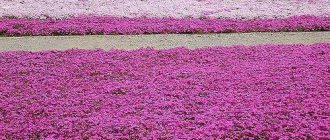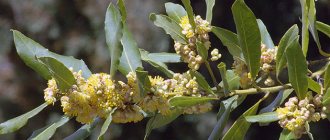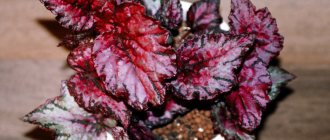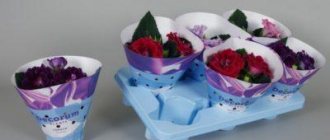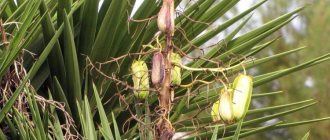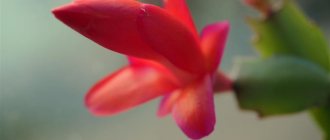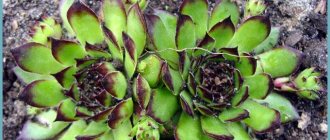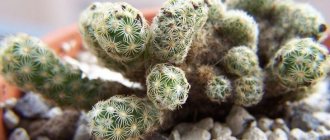Description of the variety
Perennial spurge is a small, round-shaped bush. It reaches a height of 50-60 cm, a width of 100-150 cm.
The shoots are numerous and densely located. Each of them looks like a lush bouquet thanks to the bright inflorescence of small flowers. Most often they are yellow (however, the color palette, like the shape of the leaves, depends on the specific variety).
When damaged, leaves and stems secrete a rather aggressive milky sap. In small doses it has beneficial properties and is used in medicine. But when it gets on the skin in normal concentrations, it causes severe irritation, and sometimes much more severe consequences (even death).
It is important to remember that all work with garden spurge must be done with gloves.
Understand the beneficial properties
Euphorbia is characterized not only as a poisonous and extremely aggressive weed. The plant has a number of beneficial properties, for example, it contains:
Euphorbia can be used as an anti-inflammatory, antiparasitic, and diuretic. It fights well against warts, lichens, calluses and other skin pathologies.
Infusions and decoctions of milkweed have a tonic, stimulating effect BUT! The use of milkweed for the treatment of any diseases in folk medicine is permissible only after a comprehensive examination and consultation with a doctor.
If used correctly, even such a seemingly harmful weed can provide undoubted benefits.
Source
Popular varieties
- Myrtifolia. A low-growing perennial that grows up to 20-25 cm. The main feature is the original diamond-shaped leaves of a bluish-gray-green hue.
- Almond-shaped (or almond). Medium-sized ornamental bush with bright light green flowers. It blooms from April to early July and does not tolerate frost.
- Purpurea. It belongs to the previous variety (full name - Euphorbia Amygd Purpurea), but is distinguished by luxurious purple leaves.
- Cypress. A half-meter shrub with narrow and thin leaves resembling pine needles. Inflorescences can be yellow, white or red.
- Multi-flowered. A common frost-resistant variety. First it acquires a light green color, and then becomes lemon. Grows up to 70 cm.
- Mediterranean (other name: Sculptural). Vertical shrub (length 1.5 m). Its carpal inflorescences and hairy stem of a bluish tint look interesting.
- Griffith. An exotic Tibetan variety with delightful scarlet flowers. Loves sandy soil and calcium supplements.
- Red-leaved. It is distinguished by dark red leaves of an oblong elongated shape.
- Bonfire multicolor. A spectacular ornamental plant with bright yellow flowers and purple leaves. Grows up to 40-45 cm.
- Official. An annual that often grows like a weed, but tends to repel rats, mice, cockroaches and bedbugs from the home.
- Capitate. A low bush with bluish leaves and original flower heads. It needs to be trimmed in time to prevent creeping shoots from spreading throughout the garden.
- Longhorned. It has pink inflorescences and green foliage. Reaches 70 cm, usually grows in the Caucasus.
- Bordered. An extremely showy plant with white edges on the leaves. Grows up to 80 cm, loves partial shade and slightly acidic soil.
Purchase and adaptation
Purchase garden spurge in a special store or from hand. Its prices are quite reasonable, although they depend on the rarity or prevalence of the variety.
For example, the usual myrtle-leaved variety can be bought for 80-100 rubles, and the almond-shaped Purpurea - for 200-250 rubles.
Street shrubs do not require special adaptation after purchase. However, it is worth waiting before transplanting it into the garden.
You should observe the plant for several weeks and make sure there are no pests or diseases. It is best to transplant from a container into open ground at the end of May.
Benefits of using garden milkweed in landscape design
Varieties of garden milkweed allow it to be used in design compositions:
- low succulent varieties are suitable for decorating rock gardens;
- medium-sized bushes are planted along border lines to limit or define space;
- many varieties are used to highlight recreation areas;
- low-growing species are planted around tall trees and coniferous shrubs.
Compositions using perennial milkweed help not only make the area more spectacular, but also delimit the space.
Landing rules
Planting in open ground is carried out in the spring (mid-late May). The soil is loosened, and if the reaction is acidic, it is limed.
If seedlings are planted, make a hole with a diameter of 10 cm, and if the plant is transplanted from a container, make a hole the size of an earthen clod.
Expanded clay is laid underneath (for drainage), and then 4-5 cm of compost. Euphorbia is placed in a hole and sprinkled with a substrate of soil, peat and sand. Water with lukewarm water, and when the top layer dries, loosen it so that a crust does not form.
Transplanting shrubs from place to place is undesirable; if it is done, it is done no more often than once every 5 years.
Care
The plant is easy to care for
The plant is very unpretentious, no. When grown in open ground, it requires minimal care.
During dry periods, it needs to be watered, and in early spring, preventative pruning should be carried out.
The shrub needs moderate fertilizing and weeding, and some varieties need to be prepared for winter.
Selection of soil and location
It is better to plant milkweed in a sunny place (but not in direct sunlight) or in partial shade.
The shrub is unpretentious to the soil (some preferences depend on the specific variety). It usually does well on loose loams with a neutral, alkaline or slightly acidic reaction.
Fertilizers and fertilizers
Euphorbia does not need frequent feeding. On fertile soils it can do without them altogether. On soils with low amounts of minerals and organic matter, feed with a universal complex three times per season (in May, July and early September).
Watering
The shrub is drought-resistant enough to not need watering with regular rainfall. During hot and dry periods, milkweed is watered as needed. Evening sprinkling is also useful - the bush will look fresher and more decorative.
Weeding and mulching
Like other plants, milkweed needs weeding. Loosening helps improve access of oxygen, moisture and nutrients to the root system.
Mulching is carried out in the fall, before the onset of winter - peat chips are usually used.
Trimming
In early spring, bushes can be formed and sanitary pruning carried out.
Some types of perennials, like annual weeds, spread very aggressively and can take over an impressive part of the garden. These include spurge capitate and cypress. These varieties cannot be ignored; their growth must be promptly and regularly limited.
Preparing for winter
At the end of autumn, the shrubs are mulched with peat chips.
Most varieties can withstand cold weather adequately, but there are also heat-loving varieties that do not tolerate frost. These include Euphorbia Myrtifolia and Mediterranean. For the winter it is better to cover them with spruce branches.
How to get rid of milkweed
The real reality is that milkweed can be found both in the wild and in vegetable gardens anywhere in the world. It's all about his vitality and ability to adapt. He is not afraid of either heat or frost. That is why the plant is called the scourge of agriculture.
In recent decades, the thickets of this weed have increased also because the area of agricultural crops has decreased: most fields have turned into virgin soil: they are not plowed or cultivated.
Euphorbia is a nasty weed that is very difficult to get rid of. And it absolutely must be destroyed. Having settled on a summer resident’s plot or a farmer’s field, the plant begins to settle in the territory, taking over it like a real aggressor.
The active growth of the garden weed, the photo of which is below, begins earlier than other plants. His growth bud is rapidly developing. When a gardener digs up the beds and applies fertilizers, he feeds not only cultivated plants, but also weeds, including milkweed.
No matter what agricultural practices you use, you will not be able to remove the weed if the seeds are still in the ground.
Comment! The seed material of the milkweed weed, as well as the roots, can “freeze” in the ground for several years if there are no conditions for their germination.
Reproduction methods
This species is propagated by seeds, cuttings or dividing the bush. Euphorbia can also reproduce by self-sowing. To do this, shrubs are planted in the garden in pairs - male and female.
Seeds
In the fall, the seeds are sown directly in the garden bed, in the spring - in a box for seedlings. In April, they are sown in a substrate of turf soil, sand and compost and placed in a greenhouse at a temperature of 18 -23 ° C until germination (usually this takes one and a half to two weeks).
At the stage of three true leaves, plants can be planted in pots. At the beginning of June, they are planted in open ground in a permanent place.
Cuttings
Euphorbia can reproduce by self-sowing
Cuttings are carried out in July or August. The tops of shoots 10 cm long are cut from the bush (the lower leaves and inflorescences are removed) and placed in water for a couple of hours to allow the juice to flow out. Then they are treated with Kornevin, dried and deepened into a moist substrate of sand and perlite.
The cuttings are placed in a greenhouse, regularly moistened and ventilated, until root shoots appear.
Dividing an adult plant
The shrub is propagated by division in April or at the end of August. The bush is dug up and divided into several parts so that two buds remain on each.
Immediately after this, they can be transplanted to a permanent place. For an adult plant, the procedure is carried out no more often than once every three years.
Method 2. Herbicides
The first method can be effective only in small areas or in places where the spurge has not had time to grow. If mechanical destruction does not produce results, you cannot do without chemicals.
Soil treatment with herbicides must be carried out in compliance with all rules and safety standards according to a clear algorithm:
Effective weed control drugs:
Name of the drug
| Description | |
| Active substance: rimsulfuron - 32.5 g/kg, dicamba - 609 g/kg. Dosage: Mode of application: Ideal for no-till or minimum-till soils | |
| Active substance: zopropylamine salt of glyphosate 480 g/l. Dosage: Mode of application: After application, compliance with the quarantine zone for people – 15 days |
The next year after applying herbicides, it is recommended to plant green manure on the site: mustard, vetch or lepine.
If there are a large number of weeds in an already planted area, you can use selective drugs:
| Drug name | Description |
| Active substance: metribuzin. Dosage: from 4.5 to 10 g per 10 liters of water, depending on the purpose of use. Mode of application: the solution is applied immediately after dilution, spraying in dry, windless weather at a temperature of +15...+25 °C | |
| Active substance: rimsulfuron 250 g/kg. Dosage: Mode of application: The half-life of the herbicide is 10 days. | |
| Active substance: isopropylamine salt. Dosage: Mode of application: To protect the planted crop from the action of the herbicide, it is recommended to cover the plants with waterproof material |
After completing work with the chemical, be sure to take a shower and wash your clothes thoroughly. If the herbicide gets into the eyes or mucous membranes, rinse the affected area with plenty of running water and immediately consult a doctor.
Spraying is carried out in thick clothing, glasses, the respiratory tract must be protected with a mask, otherwise there is a high risk of poisoning
Diseases and their treatment
| Disease | Signs | Prevention | Control measures |
| Fusarium | The leaves turn yellow and wither; A dark ring is visible on the cut; White or reddish coating on the root collar; Drying of the aboveground part of the bush. | Liming acidic soil; Moderate watering; Good drainage layer; Loosening and mulching; destruction of insect carriers; proper care. | Removal of affected parts; Replanting to a new location with healthy soil; Treatment with biological products and fungicides (Fitosporin, Fitolavin, Bordeaux mixture and others). |
| Root rot | Slow growth; Darkening of the stem; Brown spots on leaves; Drying of foliage and lodging of stems. | Calcination and disinfection of seeds before planting; Disinfection of equipment, burning of affected plants (they cannot be left in compost); Compliance with agricultural practices (proper watering and fertilizing). | Removing the damaged part of the bush, replanting it in a disinfected substrate; Treatment with drugs: Trichodermin, Trichofit, Mikosan, Discor, Copper sulfate, Vitaros. |
| Ring spot | Yellow ring-shaped spots on the leaves. | Destruction of vectors – nematodes; Disinfection of seeds, soil and garden tools | This viral disease has no cure. Affected plants should be burned. To prevent large-scale spread in the area, it is necessary to treat the weeds with herbicides and destroy nematodes. |
Pests and their control
| Pests | Signs | Prevention | Treatment |
| Nematode | Dry brown spots; Drying and curling of leaves; Suppressed growth. | Burning all weeds on the site; Disinfection of soil and seeds; Spilling boiling water on the soil; Regular weeding and loosening. | Soaking the roots of the plant in hot water with formaldehyde; The use of nematicides - chemical or biological products. |
| Mealybug | Cotton-like waxy coating; Black sooty mushroom. | Regular inspection of plants; Removing dry leaves. | Washing with a solution of laundry soap; Treatment with infusion of garlic or tobacco; Use of drugs: Aktara, Calypso, Fitoverm. |
Prevention
Killing the spurge weed using various means is half the battle. The main thing is to consolidate the result. Mulching the soil using organic or inorganic means will help with this.
The dug up and processed area is covered with a thick layer of sawdust, wood chips, shavings, and humus. Covering with roofing felt or dark film (spunbond) helps a lot. The temperature under the shelter is high, the roots of the plant die, and the sprouts cannot break out.
No weeds, no chemicals:
